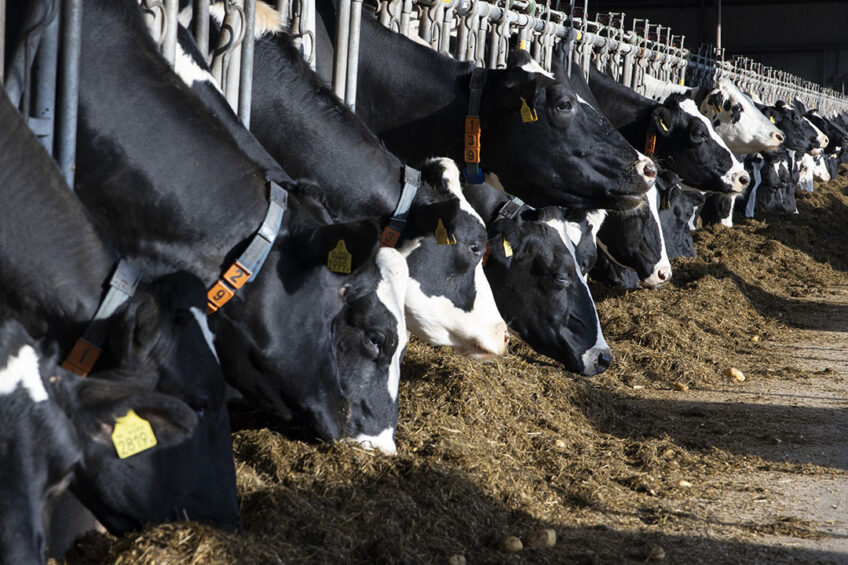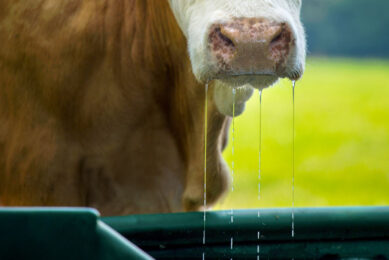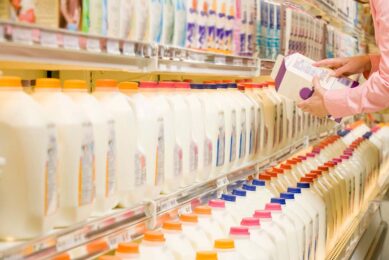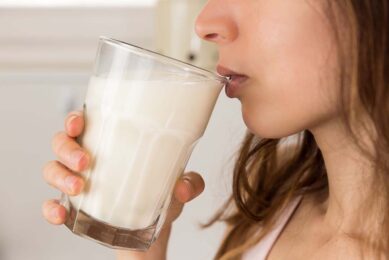A closer look at consolidation in the US

In the US, dairy industry consolidation continues. Farms with thousands of cows on site have sustainability challenges, but regulations and technology are keeping pace.
And while this situation does present some concerns relating to environmental sustainability and animal welfare, regulations and technology are keeping pace to mitigate these concerns effectively. However, technical challenges still exist in the effort towards further carbon emissions reductions – and eventually, carbon neutrality – across the entire US dairy industry.

First, let’s look at how dairy farm size has grown and farm numbers have declined in the US. An update on this was published in mid-2020 by James MacDonald, Jonathan Law and Roberto Mosheim of the Economic Research Service of the US Department of Agriculture. They report that US dairy herd numbers fell by more than half between 2002 and 2019, with an accelerated decline in 2018 and 2019. In an associated article (‘Scale Economies Provide Advantages to Large Dairy Farms’), MacDonald notes that in 1997, about 56% of US dairy cows were on farms of 199 cows at most, and only 18% were on farms with herds of 1,000 or more. By 2017 (see table), the number of these very small farms fell by ⅔, while their share of all milk cows fell to 22%. At the same time, by 2017, farms with at least 1,000 cows had more than doubled in number and were home to 55% of the US dairy herd.
MacDonald also notes that in 2017, the US Census of Agriculture listed 189 dairy farms with at least 5,000 cows, a large increase from only 8 of that size in 1992. “Today, the very largest US dairy farms milk more than 25,000 cows,” he explains in his article, “and are usually organised in a series of pods, each comprised of cow barns or lots, manure storage units, feed bunkers and milking facilities.”
Reasons for dairy farm consolidation
Dr Frank Mitloehner, a professor at University of California, Davis, believes that one of the main reasons smaller dairy farms are disappearing in the US is ever-tightening profit margins. In his article, MacDonald agrees, noting that larger farms generally have lower production costs than smaller farms. And because they can use economies of scale, “larger farms are more likely to realise positive net financial returns to milk production, even though their average revenues [per unit milk produced] are, on average, somewhat smaller than the revenues of smaller farms.”
There is also added financial pressure on US dairy farms because demand for dairy products is declining there. While production of milk has grown over time in the US, mostly due to growing population levels, per capita US milk consumption declined by 24% between 2000 and 2017 (as noted in an August 2020 article in Visual Capitalist called ‘MegaMilk: Charting Consolidation in the US Dairy Industry’). This is believed to be due to factors such as the ageing population, a rising number of alternative dairy-like products and preferences of those who continue to immigrate to the US.
Hard butter, hard questions
Canadian dairy farmers are under fire for feeding palm oil to their cows in order to produce more butter, which is in hot demand for home baking during this pandemic. However, it’s made the butter harder at room temperature, and lit another firestorm of controversy about public trust in the food system.
There are also farms “that are not profitable and/or which no one in the second generation is interested in taking over or has adequate access to the capital needed to bring the farm up to a profitable level of operations”, adds Peter Vitaliano, chief economist at the National Milk Producers Federation (NMPF). “Because of that, over time, younger operators with profitable operations are expanding operations, resulting in fewer but larger operations producing the nation’s milk supply.”
Sustainability
In terms of animal welfare, no matter the size of farm, 99% of all US dairy farms participate in the National Dairy FARM (Farmers Assuring Responsible Management) program, according to Jamie Jonker, NMPF staff scientist and vice president of sustainability and scientific affairs. The program requires that dairy farms be assessed at least once every 3 years to identify strengths and outline improvements if necessary.

MacDonald, Law and Mosheim also note in their report that dairy consolidation has led to substantial reductions in pasture grazing, a practice shown to provide positive welfare benefits (see dairyglobal.net for more). However, a trend towards larger farms is only one reason pasture usage has declined in the US and many other parts of the world.
On the environmental front, MacDonald, Law and Mosheim note that “by consolidating cows into fewer but larger farms in a narrowing range of geographic areas, manure production has become concentrated, creating water and air risks from excess nutrients.” However, regulations have kept pace to mitigate these risks.
Most large US dairy operations are now regulated by the federal Clean Water Act and are also subject to state regulations. Jonker explains that a permit under the Act requires a ‘Comprehensive Nutrient Management Plan’ detailing how manure is stored, maximum storage capacities and more. The Plan also documents all crop nutrient needs, soil test results and application of all nutrients (including manure) to the fields.
Dairy farms without enough land to spread manure according to soil test results and crop needs,” explains Jonker, “may need a strategy to export manure” from the farm.
In addition, many larger dairy farms are incorporating newer technology such as manure separation and methane digesters to manage manure and cut carbon emissions. But MacDonald and his colleagues point out that although US dairy farms do receive cost-sharing support for improvements in manure management, “added support provided in recent years – while substantial in the aggregate – remains a fraction of the average cost differences between small and large operations.”
Larger farm, more financial resources
In California, where environmental regulations are particularly robust, there has been a huge amount of activity to install manure digesters on dairy farms and to collect and clean the biogas so that it can be used to generate electricity or power vehicles. In the last 3 years alone in California, about 150 new digesters were built, says Mitloehner, and new funding for more was announced in 2020. He explains that while most digester-funded dairies are large, many small dairies have received funding for projects related to alternative manure management technologies like manure separators.
First certified regenerative organic dairy farm in the US
Alexandre Family Farm is the first certified regenerative organic dairy farm in the United States.
Jonker believes the fact that so much technology has already been embraced by the US dairy sector is precisely why “it is the world leader in controlling greenhouse gas emissions.” He points to a finding from the Food and Agriculture Organization of the United Nations that carbon emissions from the North America dairy sector (with US production being most of that) decreased from 2005 to 2015 by 5%, even as US milk production and dairy farm size has increased over that period.
And while getting the whole industry to achieve carbon neutrality will require overcoming technical and economic hurdles, Jonker says, “The US dairy industry has embarked on the ‘Net Zero Initiative’ to accelerate technology development and implementation through research, demonstration projects and economic pathways.”
Parting thoughts
In terms of overall sustainability and dairy farm size, Mitloehner believes there is no correlation. “Farms are measured regularly on various aspects of environmental sustainability, and those at every achievement level include both small and large operations,” he explains.
However, larger farms are more under the microscope to ensure all the regulations are being met. They get more visitors from the inspectors and auditors, but all farms should be being equally held to the same standards.”
“The question is,” he says, “do we need to financially support the smaller operations so that they can implement the technologies related to sustainability and stay viable, so that small family farms are maintained? That is something each country is deciding as time goes on.”
Join 13,000+ subscribers
Subscribe to our newsletter to stay updated about all the need-to-know content in the dairy sector, two times a week.
 Beheer
Beheer









 WP Admin
WP Admin  Bewerk bericht
Bewerk bericht